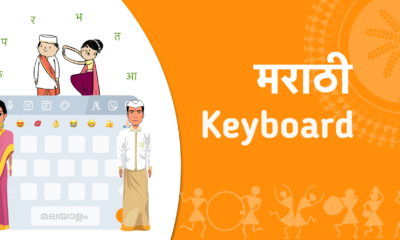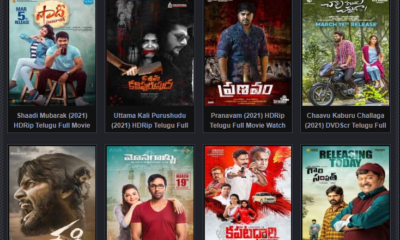Business
What is Agile Project Management and Its Phases?

What is Agile Project Management?
Agile project management is an adaptive method of product development. It takes into account the iterative and incremental approaches of developing and delivering products to the customer. The focus of agile project management is on value creation and customer centricity. The other important aspects of agile project management are: its responsive nature to the changing requirements, its progressive outlook toward software planning, and leadership shift from command & control to servant leadership.
The scope of some of the projects is well-defined and certain. The traditional or waterfall model of managing the projects is used in such scenarios. The scope of some of the projects is uncertain, ambiguous, volatile and complex. The very nature of agile project management makes it complimentary to execute such uncertain projects. Project Management is a vast subject and involves many new concepts, processes, and tools. This PMP Certification Training Program involves comprehensive class activities based on real-life scenarios to help you understand the concepts well so that you can answer the PMP exam questions well as well as use these in your job.
5 Phases In Agile project management
Envision
This phase can be considered equivalent to the initiating process group in traditional project management. It helps create vision for the project. The vision focuses on the customers and the stakeholders involved in the project. It covers the why, what, how, and who of the project. It defines the product vision, scope, constraints, delivery methodology, and the stakeholders.
Speculate
This phase can be considered equivalent to the planning process group in traditional project management. This phase expands the envision phase and encourages brainstorming, critical thinking, creative thinking, and collaboration to plan the execution of the project. It translates the product vision into product roadmap, to release level planning and iteration level planning. It determines the workload, product features, estimation, risks, and delivery.
Explore
This phase can be considered equivalent to the executing process group in traditional project management. It focuses on following the release/iteration plan (as prepared in the previous phase 2 called Speculate) and delivering project features; more specifically delivering potentially shippable products.
Adapt
This phase can be considered equivalent to the monitoring & controlling process group in traditional project management. This phase focuses on inspection, supervising, modifications, changes, and corrections in the project lifecycle. The phases Speculate, Explore and Adapt are regularly revisited in order to improve the product delivery and project execution in each and every iteration. This means reviewing actual results versus planned results. This phase covers the improvements needed which are integrated into the next iteration.
Close
This phase can be considered equivalent to the Closure Process Group in traditional project management. Per the definition of a project given in PMBOK, it has a definite start and a definite end. The expectations of the customers are set at the onset of the project about the endpoint of the project. Not doing so would result in the perception issues among the customers which would result in unnecessary fall-outs. Doing it right, would help celebrate the success of the project. However, before the team ends the project, ensure to analyze all the key findings, knowledge gathered, and lessons learned and pass these along to the next team so that they can benefit.
Agile Mindset & Manifesto:
The agile project management methodologies like Extreme Programming, SCRUM, DSDM, Adaptive Software Development, Crystal, Feature-Driven Development, Pragmatic Programming, were already existing before the agile movement was formalized in 2001 with the publication of the agile manifesto for agile software development.
The original seventeen authors signed a manifesto which contained 4 values and 12 principles. The manifesto stated that:
We are uncovering better ways of developing software by doing it and helping others do it. Through this work we have come to value:
Four Values
- Individuals and interactions over processes and tools
- Working software over comprehensive documentation
- Customer collaboration over contract negotiation
- Responding to change over following a plan
Twelve Principles
- The highest priority is to satisfy the customer through early and continuous delivery
- Welcome changing requirements, even late in development
- Deliver working software frequently, from a couple of weeks to a couple of months
- Stakeholders and developers must collaborate on a daily basis
- Build projects around motivated individuals. Give them the environment and support they need, and trust them to get the job done.
- Face-to-face meetings are deemed the most efficient and effective format for project success
- A final working product is the ultimate measure of progress
- Agile processes promote sustainable development. The sponsors, developers, and users should be able to maintain a constant pace indefinitely.
- Continuous attention to technical excellence and good design enhances agility
- Simplicity, maximizing the work not done, is an essential element
- The best architectures, requirements, and designs emerge from self-organizing teams
- At regular intervals, the team reflects on how to become more effective, then tunes and adjusts its behaviour accordingly
As per agile practice guide of PMI, agile is a mindset defined by values, guided by principles, and manifested through many different practices.
Characteristics of Agile Life Cycle for product development
The creation of agile manifesto started to simply product development in software industry. However, the characteristics of agile methodologies have made its impact on almost all the industries. The agile way of managing projects is not restricted to software industry only. It is critical to understand that the following characteristics are intrinsic to all kinds of projects, whether they follow predictive or agile (adaptive) life cycles. The focus here is on the attributes specific to the project characteristics managed in agile manner. These characteristics and their attributes are mentioned below.
- Requirements: The projects which are managed in an agile manner have an intrinsic characteristic of dynamism. The requirements and eventually the scope change occur often and to incorporate such kind of changes, agile and adaptive methodologies are adopted.
- Activities: One of the other most important characteristics of agile project management that the activities are repeated until near perfect solution is achieved. This can be referred to as iterative approach of creating product.
- Delivery: The delivery of products/features in agile methodology is done frequently with incremental deliveries. This delivery is potentially shippable product. This is related to incremental way of delivering product.
- Goal: The goal of agile project management is to deliver value to the customers via frequent delivery by incorporating early feedback.
In general, agile life cycle uses the project characteristics of both iterative and incremental life cycles, i.e., the project team iterate to create the product incrementally. This ensures that the team gets the visibility of the project and gain early feedback from the customer.
Agile Roles
There are three major roles defined in the agile way of managing projects.
- Cross Functional Team members: The cross functional teams are also called as the development teams and are the most critical. Agile teams comprise dedicated team members. Cross functional teams consist of team members with all the skills necessary to produce a working product. The cross functional development teams consist of professionals who deliver potentially releasable product in time-boxed frame. They deliver finished work in the shortest possible time, with higher quality, without external dependencies. The teams are mostly collocated or the team members have the ability to manage any challenges based on location. The teams consist of generalists and specialists and usually work in a stable environment. Agile teams are self-organizing and they themselves decide how to best accomplish their work for each sprint.
- Scrum Master: This role can also be associated with the role of servant leader. This can also be called a project manager, team lead, team coach, team facilitator, or process facilitator. The basic and foremost responsibility of this role is to remove impediments, blockers and barriers during the project execution. This ensures that the sprint stays on track by monitoring progress and facilitating meetings. The servant leaders become teams’ advocate and help them communicate with the stakeholders. All agile teams need servant leadership on the team. People need time to build their servant leadership skills of facilitation, coaching, and impediment removal.
- Product owner: The product owner represents the voice of customers or users. She helps define the product roadmap, backlog, release plans and goals of each iteration. She ranks the work based on the business value of the features and product. She acts like a lighthouse for guiding the direction of the product. She works with the teams daily by providing feedback and direction of future releases. Sometimes, she requests help from people with deep domain expertise, such as architects, or deep customer expertise, such as product managers. Product owners need to be trained on how to organize and manage the flow of work through the team.
Common Agile Ceremonies
The ceremonies in agile project management methodologies are events. Some of these events are planning-based and some of them are feedback-based events. The ceremonies are:
- Backlog Preparation: An ordered list of work in agile methodology is called as the backlog. This backlog is presented in story form so that the teams can understand it. The backlog preparation takes the form of progressive elaboration and in this agile way of managing project, there is no need to create all of the stories for the entire project before the work starts—only enough to understand the first release. Product owners might produce a product roadmap to show the anticipated sequence of deliverables over time. The product owner replans the roadmap based on what the team produces. The backlog preparation is one of the layers of the Agile Planning Onion; it is the third layer in the onion. In this, the strategy forms the topmost layer, followed by portfolio, product, release, iteration and daily.
- Backlog Refinement: The product owner works with the team to prepare some stories for upcoming iteration in the middle of the iteration. The reason for such meetings is to refine enough stories so the team understands these stories and compare them with other stories in the backlog. These meetings help the team understand the potential challenges or problems in the story. The teams can use spike to understand the risk. There is no consensus on how long the refinement should be.
- Daily Stand-ups: The ultimate goal of daily stand-up meetings is to ensure that all the members of the team are on the same understanding of the project and its progress. The members use this meeting to commit to each other, share problems, and ensure a smooth workflow. This meeting is timeboxed for no longer than 15 minutes. During this meeting, everyone answers the following questions:
- What did I complete since the last stand-up?
- What am I planning to complete between now and the next stand-up?
- What are my impediments (or risks or problems)?
It is the responsibility of the process owner to not let the daily stand-up meetings become status meetings. Besides this, let this meeting not become a problem solving event.
- Demonstrations/Reviews: This ceremony helps periodically demonstrate the working product to the customer. This event helps the team gain early feedback on the features (in the form of user stories) of the product. Since the product owner represents the voice of customers or uses, it is her responsibility to check the demonstration and either accept or reject the user stories. As a general guideline, demonstrations happen at least once every 2 weeks. Demonstrations help the teams to set in the right direction if they are progressing in the wrong direction. This becomes a basic component of agile projects (incremental delivery based on iteration/flow). The ceremony of demonstration/review refers to the principle # 7 of Agile Manifesto.
- Retrospectives: Principle # 12 of Agile Manifesto is: “At regular intervals, the team reflects on how to become more effective, then tunes and adjusts its behaviour accordingly.” Post demonstration/review ceremony, the iteration asks for a meeting which would help team understand the improvement areas, correction areas, and the behaviours, actions and work to keep for the next iterations. In general, the team looks back to learn, contemplate, improve and adapt to the best practices. Teams need to learn about the product and/or process. The meeting is all about looking at the qualitative (people’s feelings) data and quantitative (measurements) data to uncover the root causes, developing contingencies, mitigation strategies, and action plans.
Conclusion
The management of projects in agile manner reflects non-traditional ways of executing projects. It embodies the 4 values and 12 principles as laid down in the agile manifesto. The 5 ceremonies compliment the effective and efficient ways of delivering values to the stakeholders which in turn takes the holistic approach of 5 phases of agile project management.
About The Author
Techcanvass is an Information Technology certifications training Organization for professionals. It offers internationally recognized certifications in the fields of Project Management and Business Analysis. It is a premier Authorized training partner (ATP) of Project Management Institute (PMI), USA and a premier Endorsed Education Provider (EEP) of International Institute of Business Analysis (IIBA), Canada. Founded by IT professionals, Techcanvass is committed to making learning a more structured, practical and goal-oriented exercise. We also provide consulting services in the fields of Project management and Business Analysis.
Business
How to Find the Best Deals on Second-Hand Mobiles Through Online Shopping

Buying a second-hand mobile is a smart choice, especially when you’re looking for a high-quality phone at an affordable price. But where do you find the best deals, and how can you ensure you’re getting a reliable device? Here are some tips to help you find the perfect second-hand mobile online.
1. Choose Trusted Online Marketplaces
To get a good deal on a second-hand mobile, start by browsing trusted platforms that specialize in refurbished or used devices. Some popular options include:
- eBay: Known for its wide range of sellers and products, including second-hand phones.
- Swappa: Focused on selling used phones directly from users, with a detailed vetting process.
- Amazon Renewed: Offers certified refurbished phones, often with warranties.
- Facebook Marketplace: A local option to find used mobiles nearby for direct exchanges.
These platforms provide a range of options, so you can compare prices, check seller reviews, and find the best deals.
2. Set a Budget and Stick to It
It’s easy to get carried away when shopping online, especially when you see premium models at discounted rates. To avoid overspending, set a clear budget for yourself before you begin your search. Make sure to consider additional costs like shipping and taxes.
3. Compare Prices Across Different Sellers
One of the best strategies for finding a great deal is comparing prices across multiple sellers. Don’t just settle for the first listing you find. Use comparison tools or manually browse various sellers on platforms like eBay or Swappa to see if there’s a better offer elsewhere.
4. Check for Warranty and Return Policies
When purchasing a second-hand mobile, it’s essential to look for listings that come with a warranty or return policy. Many platforms offer refurbished phones with limited warranties, which can protect you if the phone stops working shortly after purchase. A good return policy also gives you peace of mind in case the product doesn’t meet your expectations.
5. Read Reviews and Seller Ratings
Before making a final purchase, always read customer reviews and check the seller’s ratings. Reliable platforms like eBay and Amazon provide detailed seller feedback, giving you insight into the quality of the product and the trustworthiness of the seller. Avoid sellers with low ratings or negative reviews to minimize the risk of a bad experience.
6. Consider the Phone’s Condition
Used phones are sold in varying conditions. Be sure to understand the condition of the phone you’re buying, whether it’s labeled as “Like New,” “Refurbished,” or “Used.” Phones that are “Like New” typically have minimal wear and tear, while “Refurbished” devices have undergone repairs to function like new. “Used” phones may have visible damage but still function well. Always read the product descriptions carefully to know what to expect.
7. Look for Discounts and Coupons
Many online platforms offer seasonal discounts, flash sales, or coupons that can help you save even more on your second-hand mobile. Keep an eye out for promotions, especially during Black Friday, Cyber Monday, or end-of-year sales. Websites like eBay and Amazon frequently run sales, so it’s worth waiting for the right deal.
8. Verify the Phone’s Specifications
When buying a second-hand mobile, make sure the phone meets your needs. Double-check specifications such as:
- Battery Life: Ensure it has good battery health, especially for older models.
- Storage Capacity: Choose a model with enough storage for your apps, photos, and media.
- Software Updates: Confirm whether the phone is capable of running the latest software.
- Unlocked or Carrier-Locked: If the phone is carrier-locked, make sure it’s compatible with your carrier.
Having a clear idea of what you need ensures that you won’t regret your purchase later.
9. Avoid Common Scams
Unfortunately, scams can be common in the world of second-hand mobile shopping. To avoid falling victim to fraudulent sellers, only purchase from reputable platforms with buyer protection policies. Always use secure payment methods, like PayPal, that offer additional security and dispute resolution in case something goes wrong.
10. Test the Phone Upon Arrival
Once your phone arrives, test it immediately to ensure everything works as expected. Check the touchscreen, cameras, speakers, buttons, and charging
port. If the device doesn’t function properly or has damage that wasn’t disclosed, contact the seller or platform’s customer support right away to initiate a return or exchange.
Conclusion
Finding the best deals on second hand mobile online shopping can save you a significant amount of money without sacrificing quality. By following these steps—choosing trusted platforms, comparing prices, and checking reviews—you can confidently make a purchase that fits your budget and meets your needs. Happy shopping!
Business
Mueller Settlement Amazon: Navigating the Legal Landscape

Learn more about the intricacies of the Mueller Settlement Amazon, the consequences for Amazon legally and how it affected the company’s image. Discover the background, the thoughts of experts, and the steps Amazon took to win back customer confidence. Learn all about this retail giant’s struggles, triumphs, and plans for the future.
Introduction
Much attention has been focused on the Mueller settlement with Amazon in the intricate e-commerce industry. This article examines the origins, legal ramifications, and influence on Amazon’s reputation of this deal, among other complexities.
Understanding Mueller Investigation
What is Mueller Settlement Amazon?
A number of Amazon’s business activities were the subject of the inquiry that led to the Mueller settlement. To fully realise the implications of the settlement, it is vital to understand where this inquiry came from.
Significance of the Settlement
Understanding the settlement’s utmost significance in the business realm requires delving into the conclusions of the Mueller investigation and Amazon’s participation.
Legal Implications
Mueller Report Overview
A synopsis of the Mueller report explains the complex legal landscape that Amazon faced. To grasp the seriousness of the settlement, it is necessary to unravel the main conclusions and what they mean.
Amazon’s Legal Responses
In responding to the claims made in the Mueller report, Amazon’s legal staff was helpful. In this part, we will take a look at the methods Amazon used to protect its interests.
Settlement Details
Terms and Conditions
To further understand what Amazon was required to do, it is helpful to review the settlement agreement’s terms and conditions. Understanding the breadth of the settlement requires uncovering the financial ramifications for Amazon.
Impact on Amazon’s Reputation
Public Perception
Public opinion may have just as much of an effect as a court of law. It is instructive to compare popular opinion of Amazon before, during, and after the settlement.
Media Coverage
The media’s coverage of the Mueller settlement was essential in establishing its narrative. The impact on Amazon’s reputation as a result of the media attention is examined in this section.
Amazon’s Response Strategy
Communication Tactics
It takes finesse to communicate at a settlement. To make sense of what happened next, you had to know how Amazon strategically conveyed its position.
Changes Post Settlement
After the payment, Amazon made certain adjustments to fix its reputation. Taking a look at these adjustments shows how seriously the organisation takes the idea of learning from the mistake.
Lessons Learned
Corporate Responsibility
Many people started talking about corporate accountability after the Mueller deal. In this part, we’ll look at what other companies, including Amazon, have learnt.
Future Implications for Companies
Companies may learn a lot about how to deal with future problems like this by looking at the bigger picture of how the settlement affected their actions.
Expert Opinions
Legal Experts’ Take
Views on the Mueller settlement were expressed by legal professionals. Gaining insight into their viewpoints enriches the examination.
Business Analysts’ Perspectives
Analysts from the business world provide light on the potential financial consequences. Gaining insight into their viewpoints allows for a more complete picture to be painted.
Mueller Settlement Amazon: A Timeline
Key Events
To make sense of what’s happening, it’s helpful to go over the major points of the Mueller deal in chronological order.
Milestones in the Settlement
Readers may easily follow the events that had place by locating key points in the settlement chronology.
Consumer Trust Regained
Measures Taken by Amazon
Amazon did some things to win back the confidence of its customers. By breaking down these steps, we can see how seriously the business takes its consumers’ needs.
Customer Feedback
It is critical to pay close attention to what customers have to say. To gauge the success of Amazon’s campaigns, it is helpful to examine consumer comments made after the settlement.
Positive Outcomes
Changes in Corporate Practices
As a result of the Mueller settlement, Amazon revised and updated certain of its business policies. Looking at these developments highlights the benefits of the settlement.
Industry-wide Impact
Beyond Amazon, the settlement’s effects were felt. The effects of the settlement on the industry as a whole are discussed in this section.
Challenges Faced
Internal Struggles
Both during and after the settlement, Amazon encountered difficulties internally. The larger story gains depth from an appreciation of these challenges.
External Backlash
Amazon faced criticism from other sources. Managing a company’s reputation after a settlement is complicated, but it becomes clearer when you look at the external issues.
Success Stories Post Settlement
Amazon’s Growth
The fact that Amazon has continued to grow since the settlement shows how resilient the corporation is. A positive outlook might be gained by delving into this growth tale.
Positive Repercussions
One way to look at the bright side of things is to consider the good things that have come out of the settlement.
The Future of Amazon
Sustainability Efforts
After the settlement, Amazon made sustainability an even bigger priority. By delving into these initiatives, we can better understand the firm’s dedication to ethical business practices.
Ongoing Commitment
The commitment of Amazon to learning from the settlement and making wise adjustments will determine its future.
Conclusion
Last but not least, the path to a Mueller deal with Amazon has been one of profound change. To better overcome obstacles, organisations would do well to understand the legal, reputational, and operational ramifications.
FAQs
Is the Mueller settlement a setback for Amazon’s growth?
Amazon overcame obstacles presented by the settlement and continued to develop as a result.
How did the public react to the settlement?
Both proponents and detractors of the idea voiced differing views in response to the public outcry.
Were there long-term consequences for Amazon?
Improvements in corporate responsibility and shifts in business practices were among the long-term effects.
Business
10 Top Photo Tiles, Wall Art, and Canvas Prints Companies

Introduction
In today’s digital age, we capture countless moments with our cameras and smartphones, but often these memories remain trapped in the digital realm. Fortunately, there are companies that specialize in turning your cherished photos into stunning pieces of art that you can proudly display in your home. From photo tiles to canvas prints, these companies offer a wide range of options to transform your memories into beautiful decor. In this article, we’ll explore the top 10 companies that excel in this field, with special mention to Wallpics, a standout choice.
-
Shutterfly
Shutterfly has long been a household name in the world of personalized photo products. They offer an array of options, including canvas prints, framed prints, and acrylic prints, allowing you to transform your photos into elegant wall art. Shutterfly’s user-friendly website and customization tools make it easy to create personalized pieces that suit your style.
-
CanvasPop
CanvasPop is known for its high-quality canvas prints. They use premium materials and advanced printing techniques to ensure your photos are reproduced with vivid colors and sharp details. CanvasPop offers a range of customization options, allowing you to choose the perfect size and frame to match your decor.
-
Mixtiles
Mixtiles specializes in photo tiles, making it easy to create a unique wall display. Their peel-and-stick tiles are not only convenient to install but also offer a modern and sleek look. You can rearrange them easily, ensuring your wall art is always fresh and appealing.
-
Printique
Formerly known as AdoramaPix, Printique is a trusted name in the world of photography. They offer a variety of printing options, including canvas prints and metal prints, all of which are known for their exceptional quality. With Printique, you can be confident that your photos will be turned into beautiful works of art.
-
Easy Canvas Prints
As the name suggests, Easy Canvas Prints makes the process of creating canvas prints a breeze. Their user-friendly website guides you through the customization process, allowing you to choose from various sizes, frames, and even image enhancements. The result is stunning canvas art that’s delivered to your doorstep.
-
CanvasDiscount
CanvasDiscount is known for its affordable canvas prints without compromising on quality. They frequently run promotions and offer competitive pricing, making it a budget-friendly option for transforming your photos into canvas art. Despite the lower prices, the quality of their prints remains impressive.
-
Nations Photo Lab
Nations Photo Lab is a professional-grade photo printing service that offers a wide range of products, including canvas prints and metal prints. They are known for their attention to detail and color accuracy, ensuring your photos are faithfully reproduced. Nations Photo Lab is a popular choice among photographers and art enthusiasts.
-
Great Big Canvas
Great Big Canvas specializes in large-format art prints that can make a bold statement in your home. Their collection includes a wide range of styles, from contemporary to classic, ensuring there’s something for everyone. Whether you want to showcase your own photos or explore their vast library of artwork, Great Big Canvas has you covered.
-
Fracture
Fracture takes a unique approach to photo printing by directly printing your images on glass. The result is a sleek and modern look that enhances the vibrancy of your photos. Their minimalist design and easy-to-hang system make it simple to transform your photos into eye-catching wall art.
-
Wallpics
Last but not least, Wallpics deserves a special mention on this list. Wallpics offers a distinctive and creative way to display your photos as wall art. They specialize in photo tiles that can be easily arranged and rearranged on your wall. With Wallpics, you have the flexibility to create your own unique photo collages and arrangements, adding a personal touch to your decor.
Conclusion
Turning your favorite photos into beautiful wall art has never been easier, thanks to the top-notch companies mentioned in this article. From canvas prints to photo tiles, these companies offer a variety of options to suit your style and budget. Whether you’re looking for professional-grade quality or a budget-friendly solution, you can trust these companies to transform your cherished memories into stunning pieces of art. And with Wallpics’ creative approach to photo tiles, you have the freedom to design your own unique wall display that tells your story in a truly personalized way. So, don’t let your precious memories stay hidden on your devices; turn them into beautiful art pieces that you can enjoy every day.
-

 Apps1 year ago
Apps1 year agoWhy is Everyone Talking About Hindi Keyboards?
-

 Social Media1 year ago
Social Media1 year agoWho is Rouba Saadeh?
-

 Apps1 year ago
Apps1 year agoThings you need to know about Marathi keyboard today
-

 Apps1 year ago
Apps1 year agoStuck with Your default Bangla keyboard? Isn’t it time for a change?
-

 Social Media1 year ago
Social Media1 year agoMati Marroni Instagram Wiki (Model’s Age, Net Worth, Body Measurements, Marriage)
-

 Games12 months ago
Games12 months agoTop 7 Popular Puzzle and Card Games for Relaxing Your Brain on Mobile, Featuring Solitaire
-

 Entertainment1 year ago
Entertainment1 year ago12 Online Streaming Sites that Serve as Best Alternatives to CouchTuner
-

 Entertainment1 year ago
Entertainment1 year agoMovierulz Website: Movierulzz 2021 Latest Movies on Movierulz.com
